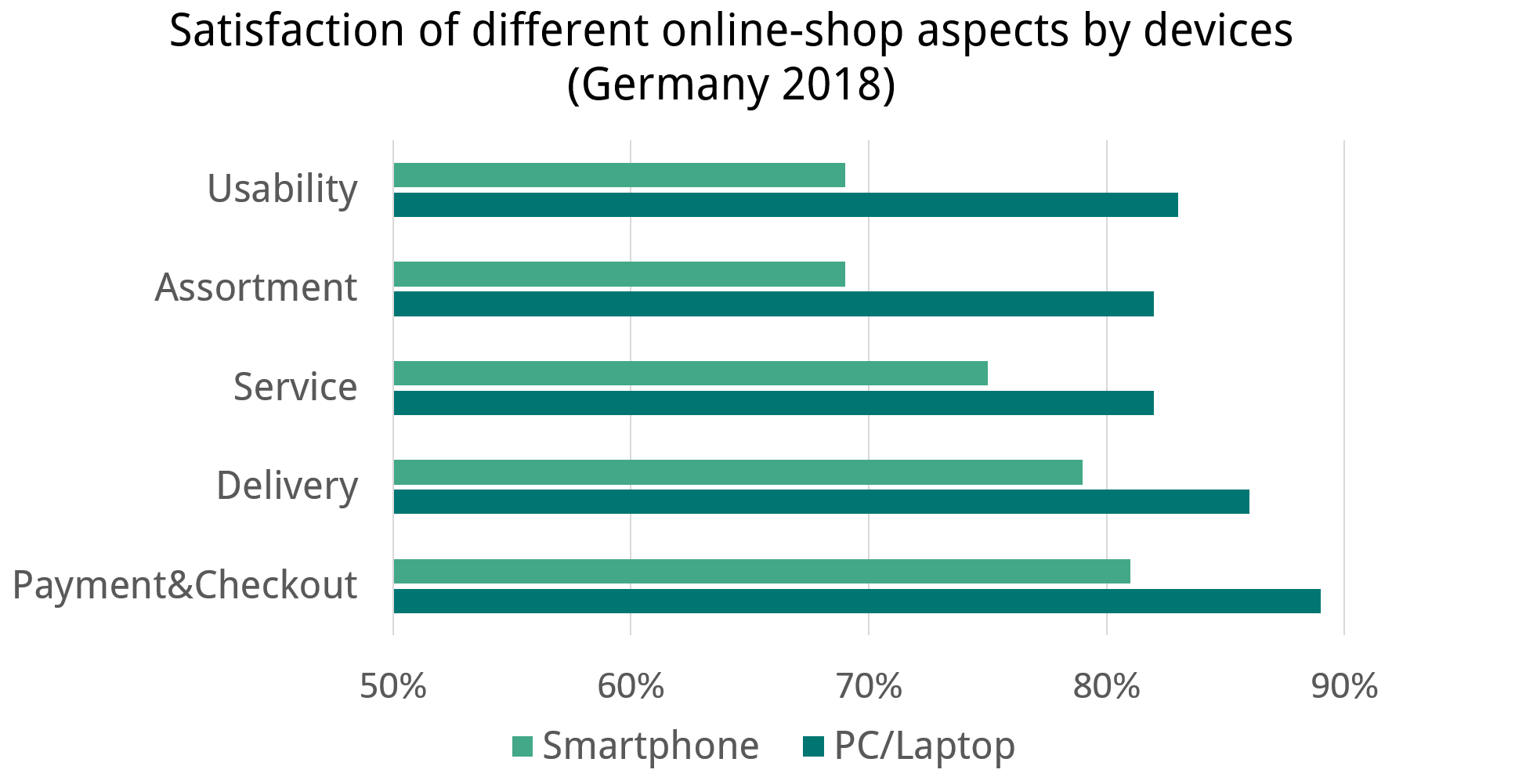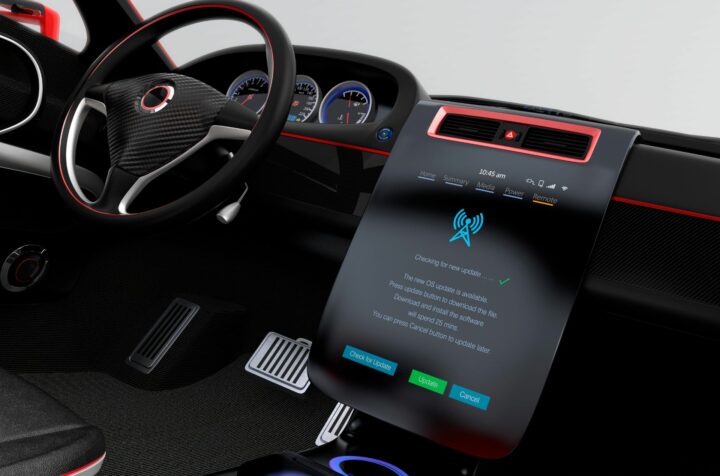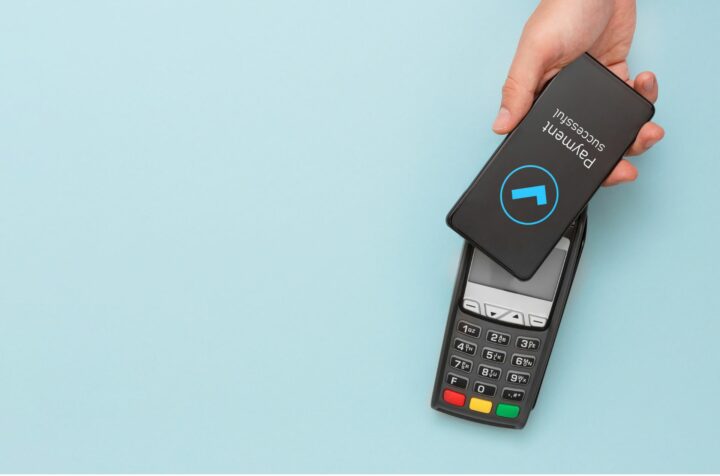We need to talk about mobile commerce usability and cross-device testing! Yes, it’s no news, that mobile commerce is on the advance and buzzwords like mobile first, responsive design and seamless shopping are long since replaced by others like machine learning and customer centricity. Nevertheless, by looking at statistics, it’s evident that we are right in the middle of the mobile shift but still seem to have problems providing a flawless user experience in mobile webshops.
Mobile commerce is on the advance
According to a statista survey, smartphones have overtaken Desktop-PCs in terms of preferred online-shopping device. With laptops still being the most popular one, purchases via smartphones have not yet peaked, but will increase in the next years to a projected 66% of shoppers using mobile devices in 2020. What’s more, m-commerce revenue is predicted to nearly double in 2021 with 3,56 billion US-Dollar worldwide, compared to 2018. With a look into the future not only will more and more of the current online-shoppers switch to a more mobile-driven purchasing behaviour, but also Generation Z, being mobile natives, will soon reach their full potential in terms of purchasing power.
Mobile commerce usability still lacks behind
Mobile commerce namely is one of the most important trends in e-commerce (78% of interviewed experts even say it is THE most momentous development these days). Why is it then, that the shopping experience and usability of most mobile webshops is still anything but flawless? Payment & checkout, delivery, service, assortment and usability – all these criteria were rated as less satisfactory on mobile webshops compared to desktop versions. In total 43% of all purchase cancellations are due to technical malfunctions. Every bug and error in the user experience is causing customer disatisfaction and a decrease in sales. That said, diligent functionality testing across all devices – desktop, tablet and most importantly smartphone – is key to optimising conversation rate and overall revenue in the e-commerce sector.

Complexity of Testing – Fragmented Device Landscape
The device landscape looks as fragmented as a pixelated picture and soon will get even more diverse, when or if Huawei’s new operating system Ark OS enters the market. A webshop app or mobile version of an online-shop can look differently on every operating system, version and device, not to mention the millions of possible combinations. What’s more, when we talk about webshops the online applications are highly dynamic and short continuous development life cycles are continually at play, what makes regression testing key to ensure quality consistency.
“We run weekly deployments where we go live with new or adjusted functionalities. From small color changes to completely new check-out integrations, it’s of the utmost importance that all functionalities work well for our customers and are user-friendly at the same time. When testing, we obviously cannot own all the devices, operating systems and browser versions available in the market. In addition, testing must happen in a relatively short amount of time, and be flexible enough to fit within our cycle”, said Corny van de Wal, Team Manager for Shop Development & Production at OTTO.
The Solution: Testing with the Device Cloud
In order to secure flawless user experience across all devices one needs somewhere to test all the combinations of operating systems, devices and browser versions to verify that a webshop actually works as intended. This way the 43% of all purchase cancellations due to technical malfunctions could be steadily decreased. The Testbirds Device Cloud gives access to these combinations. It is possible to test both manual or automated on 2.5 million virtual combinations of devices, operating systems, and browsers, as well as real devices all around the world in the Global Real Device Network. What test scenario fits best depends on the complexity and release cadence. We tackled down the benefits of manual and automated testing in two former blog-posts, where you can also find some explanatory videos and detailed information about the execution of such tests.
Test Automation: Don’t miss out on the Benefits of Test Automation
Manual Testing: A Plea for Manual Testing – Don’t Underestimate It!








